Introduction
Freshwater tropical ornamental fish culture is the largest component of aquaculture in the State of Florida and accounts for approximately 95% of all ornamentals produced in the US. There are about 200 Florida producers who collectively raise over 800 varieties of freshwater fishes. A survey of ornamental fish farms in Florida conducted by the University of Florida/IFAS Tropical Aquaculture Laboratory for the calendar year 2021 reported total tropical fish sales of $172,075,095. Given the additional economic effects of tropical fish trade such as support industries, wholesalers, retail pet stores, and aquarium product manufacturing, the importance to Florida is tremendous.
Florida's tropical ornamental aquaculture industry is concentrated in Hillsborough, Polk, and Miami-Dade counties with additional farms throughout the southern half of the state. Historic factors, warm climate, the proximity to airports and other infrastructural considerations (ready access to aquaculture equipment, supplies, feed, etc.) are the major reasons for this distribution. Having other farms nearby is advantageous because many growers sell their product to other farms which, in turn, ship to customers throughout the United States and the world. In much of Florida, earthen pond culture is most common. However, Miami-Dade County farmers use above-ground tanks and small ponds dug into the coral rock bed. There is a general trend toward more intensive culture techniques including the use of recirculating system technology to maximize production and reduce losses and water usage.
Unlike many traditional agriculture industries in Florida which may raise one or only a few different species, tropical fish farmers collectively culture hundreds of different species and varieties of fishes from numerous families and several geographic regions. There is much variation within and among fish groups with regard to acceptable water quality parameters, feeding and nutrition, and mode of reproduction. Some farms specialize in one or a few fish groups, while other farms produce a wide spectrum of aquatic livestock.
Fish can be grouped in a number of different ways. One major division in the industry which has practical significance is that between egg-laying species and live-bearing species. The culture practices for each division are different, requiring specialized knowledge and equipment to succeed.
This publication briefly reviews the more common groups of freshwater tropical ornamental fishes cultured in Florida. For simplicity, fish are grouped according to family or related families.
Major Fish Groups Cultured in Florida
Minnows, Carps, and relatives (Family Cyprinidae)
The family Cyprinidae has undergone considerable revision, with some groups such as danios and rasboras elevated into their own families. Many taxonomic relationships in this group are still tentative and may change in the future. Traditionally, Cyprinidae is the largest family of fishes, consisting of over 2000 species in over 200 genera, including numerous ornamental species that have been split off recently. For this publication we retain a more traditional view of Cyprinidae and include these species here. These fish are native to Africa, Asia, Europe, and North America. The greatest diversity is found in southeast Asia.
Minnows of interest to Florida's industry include barbs (Barbus, Capoeta, and Puntius) (Figure 1) from Africa and Asia, danios (Danio) (Figure 2) from southern Asia, rasboras (Rasbora) (Figure 3) from southern and southeast Asia, and freshwater sharks (Epalzeorhynchus and Labeo) (Figure 4) from southeast Asia.
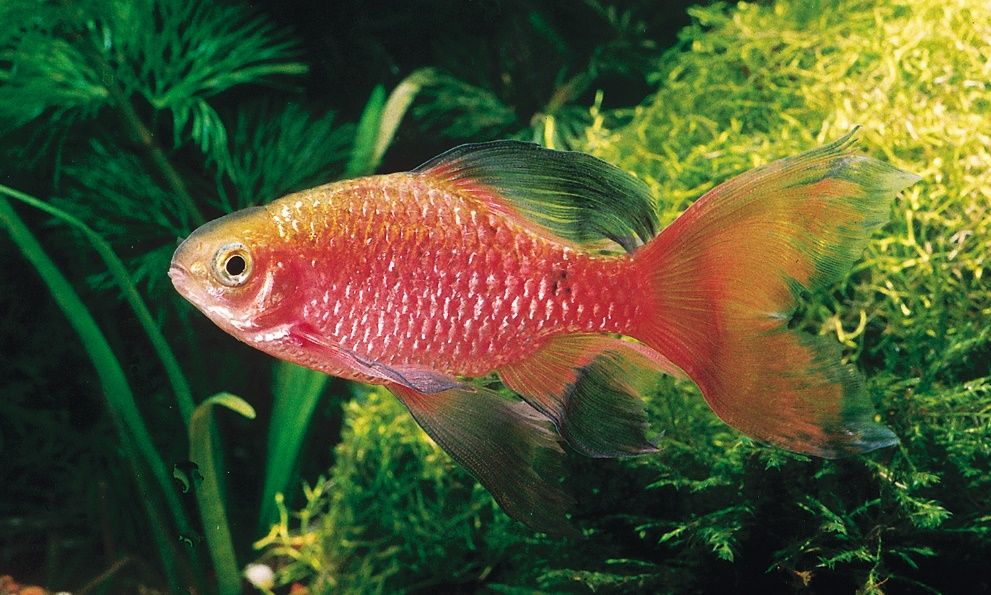
Credit: Florida Tropical Fish Farms Association
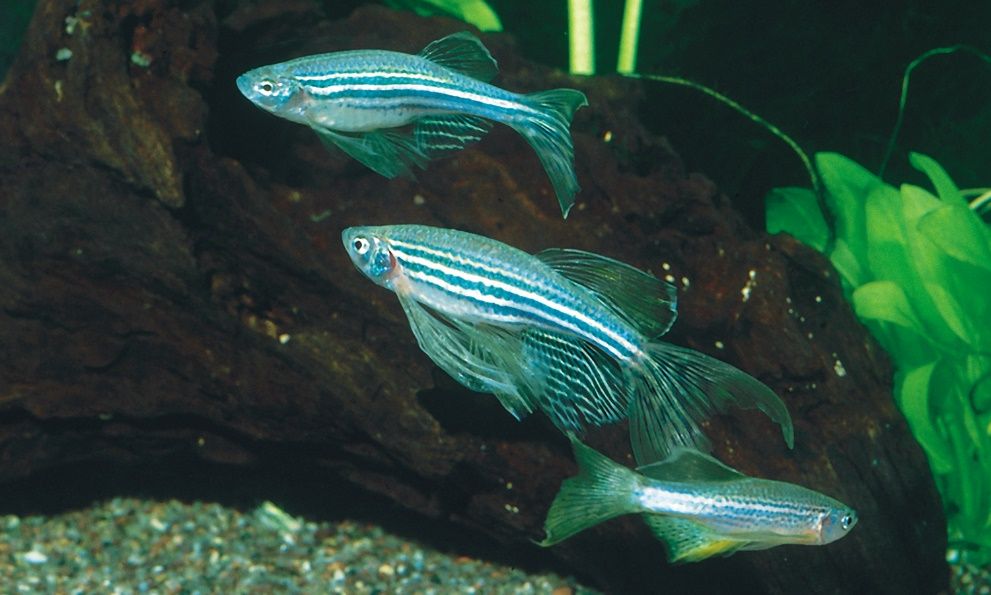
Credit: Florida Tropical Fish Farms Association
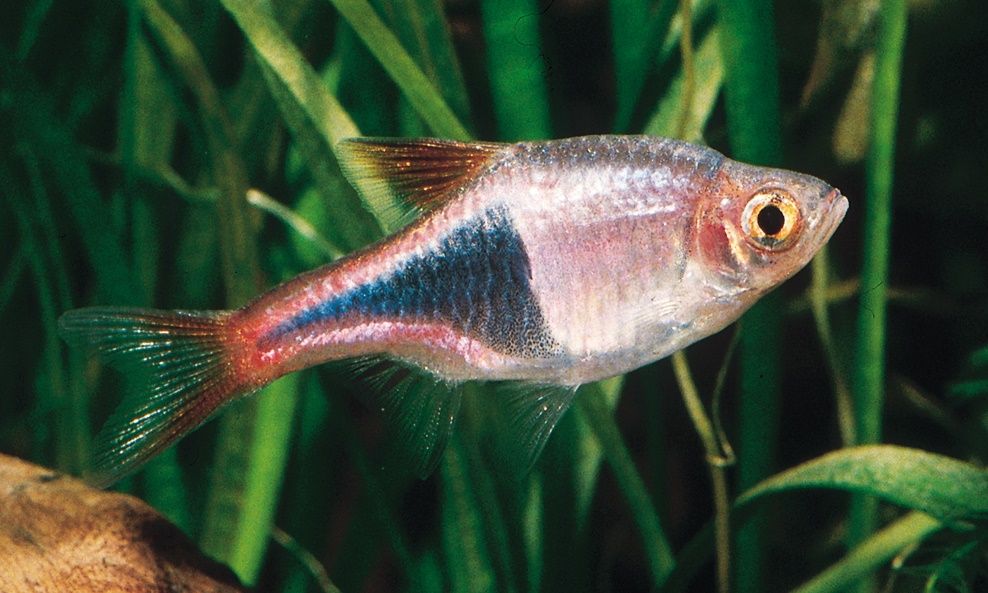
Credit: Florida Tropical Fish Farms Association
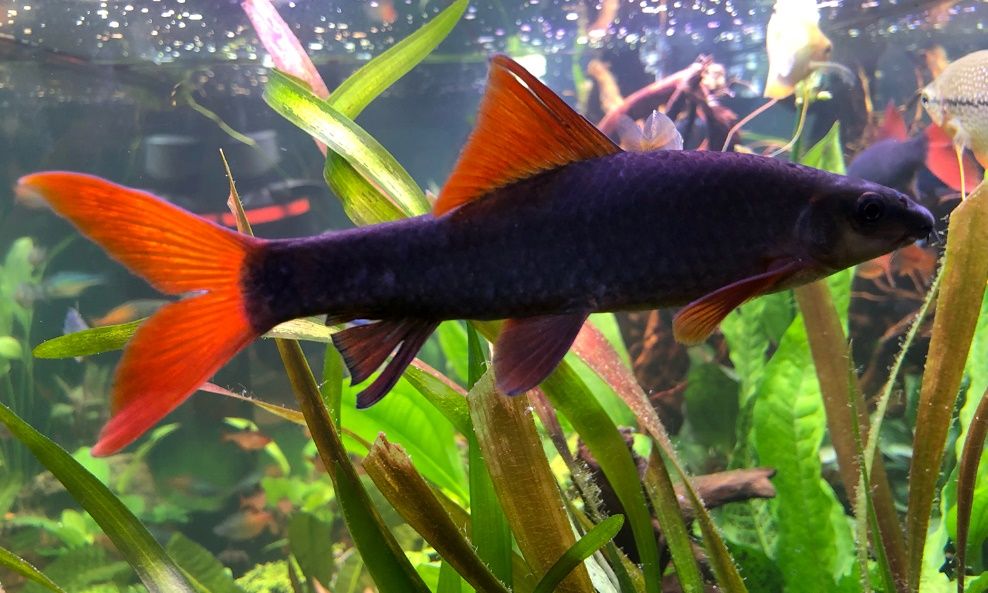
Credit: Eric Cassiano, UF/IFAS
A few temperate species also enter the pet trade and are cultured in Florida including goldfish (Carassius auratus) (Figure 5) and koi (Cyprinus carpio; C. rubrofuscus in some publications) (Figure 6). Cultured species in Florida are generally small (< 100 mm or 4 in) with an exception being the koi (> 600 mm or 24 in).
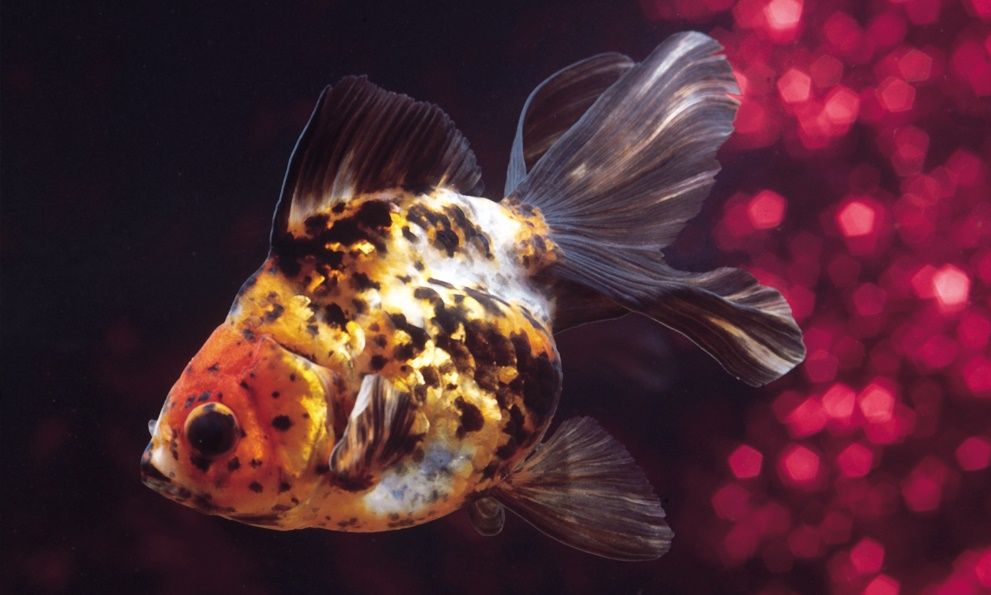
Credit: Florida Tropical Fish Farms Association
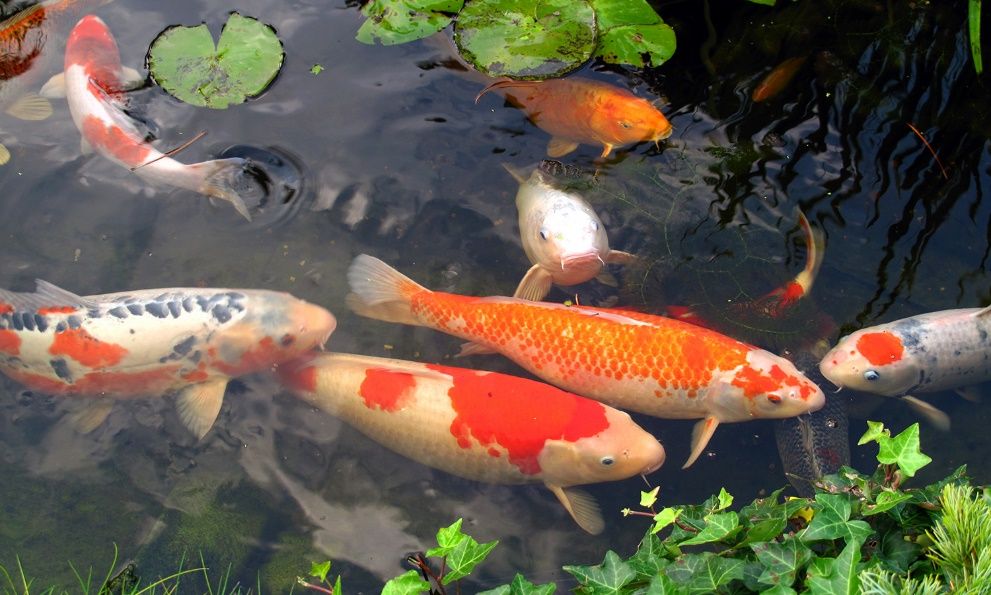
Credit: fotolinchen / iStock / Getty Images Plus
Minnows generally spawn by broadcasting their eggs and sperm as a group or aggregation. Eggs are usually laid over gravel, plants, or woody debris and there is no parental care. Some species, such as the freshwater sharks, are cultured using hormone-induced spawning techniques.
Cyprinids as a family consume a wide variety of foods, from algae and macrophytes to zooplankton, insects, and crustaceans, and even other fish. Macrophytes are plants that can be seen easily without a microscope. Zooplankton is the group of tiny animals found suspended in the water column. Crustaceans include crayfish, shrimp, and some zooplankton. Insects and crustaceans would be the most typical food items for the family.
Tetras/Characins (Family Characidae and Related Families)
The characins comprise over 1256 species in about 140 genera and originate from Central and South America and Africa. A single species, the Mexican tetra (Astyanax mexicanus) occurs as far north as Texas in North America.
A number of species in several genera are cultured in Florida, such as Astyanax, Colossoma (which includes pacu), Gymnocorymbus (including black tetra) (Figure 7), Hemigrammus (including Buenos Aires tetras and head-and-tail-light tetras), Hyphessobrycon (including lemon and black neon tetras) (Figure 8), and Paracheirodon (including neon tetras) (Figure 9). Many of these fish are considered "bread-and-butter" species in the trade. A bread-and-butter species is one that is a common staple of the industry.
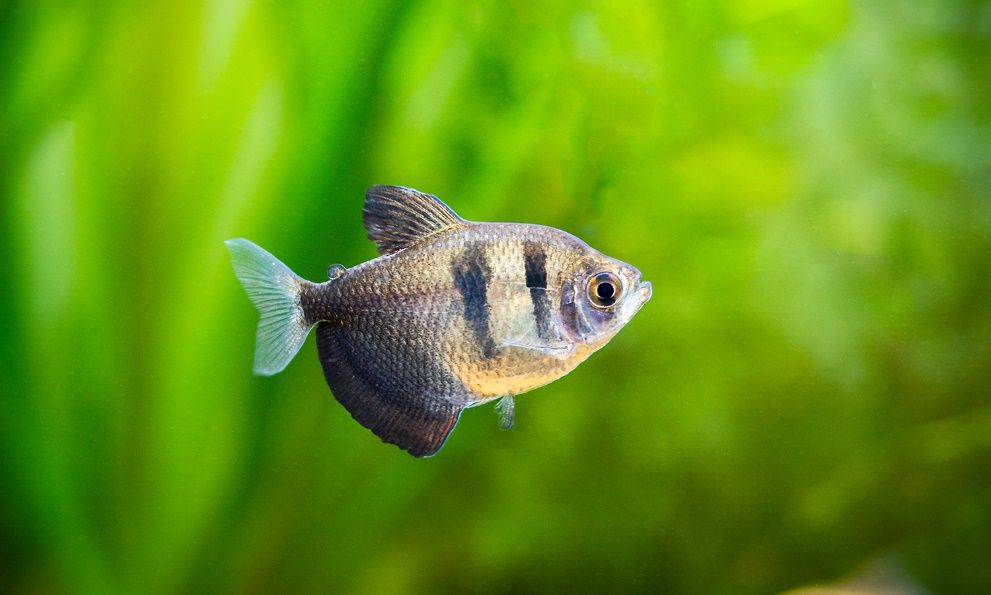
Credit: Juan Carlos Juarez Jaramillo / iStock / Getty Images Plus

Credit: Florida Tropical Fish Farms Association

Credit: Florida Tropical Fish Farms Association
Tetras come in an array of sizes and shapes. Most species cultured in Florida are small (< 100 mm or 4 in), but some such as Colossoma (pacu) can exceed 400 mm (16 in). The famous piranhas (Pygocentrus and Serrasalmus) are related to pacu but are illegal to possess in the state, and so are not cultured in Florida.
Breeding typically is similar to that of minnows, with groups of individuals broadcasting eggs and sperm over various types of structures. There is generally no parental care.
Food of tetras is quite varied and ranges from leaves, fruits, and nuts to insects and crustaceans, to fish and other vertebrates. As with minnows, a typical tetra would eat insects and crustaceans.
Armored Catfish/Corydoras Catfish (Family Callichthyidae)
About 224 species and eight genera make up this family of South American catfish. Many important species are in the genus Corydoras (Figure 10), a very popular group. These are mostly small species (< 100 mm or 4 in).
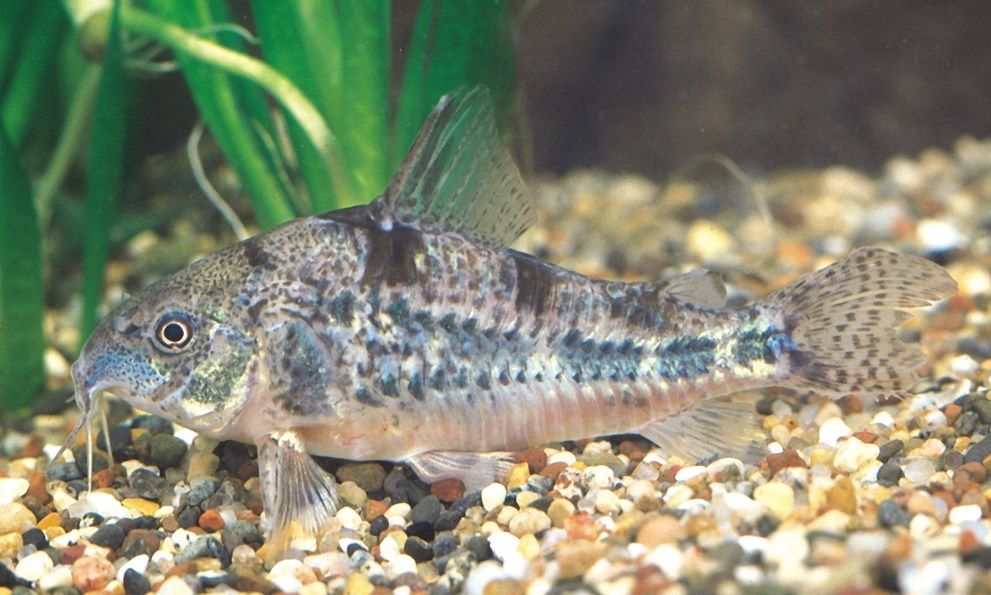
Credit: Florida Tropical Fish Farms Association
Corydoras are capable of breathing air. A dash is made to the surface by these normally bottom-dwelling fish. At the surface, a bubble is gulped and subsequently oxygen is extracted from the air bubble in the gut.
Although some members of the family build bubble nests guarded by the male (e.g., Callichthys and Hoplosternum), the Corydoras spawn in groups over vegetation or other surfaces. The adhesive (sticky) eggs receive no parental care.
These catfish consume worms, insect larvae, and detritus (organic material) from the bottom.
Suckermouth Armored Catfish/Plecos (Family Loricariidae)
The plecostomus, or pleco, family is a relatively large South American family with over 1000 species in 115 genera. Although numerous species are imported regularly, only a few species are cultured in quantity – these are mostly in the genera Ancistrus (bushy-nose plecos or bristle-nose plecos) (Figure 11), Hypostomus (common plecos), and Pterygoplichthys (the gibbiceps pleco or sailfin plecos) (Figure 12).
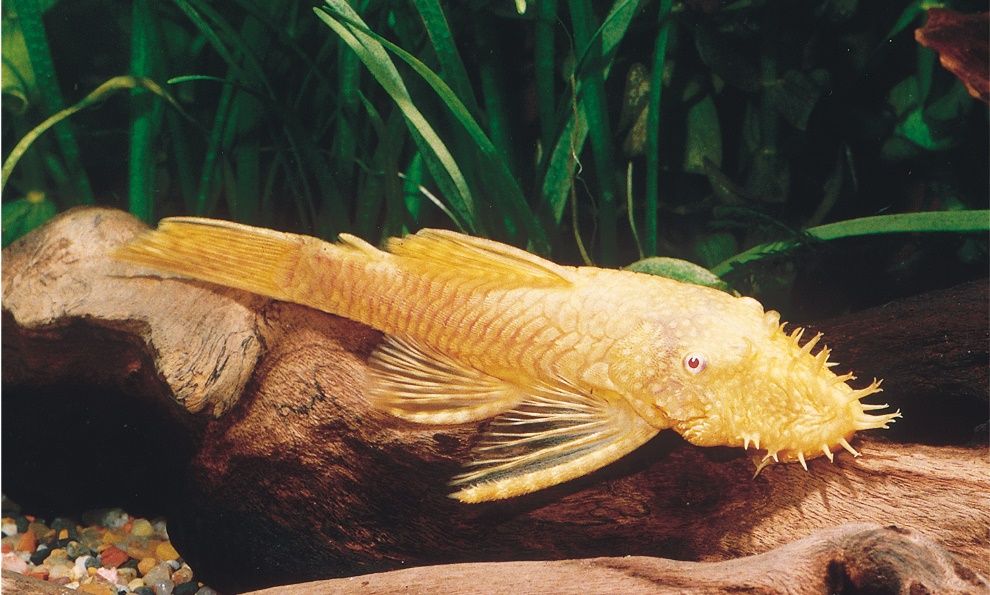
Credit: Florida Tropical Fish Farms Association
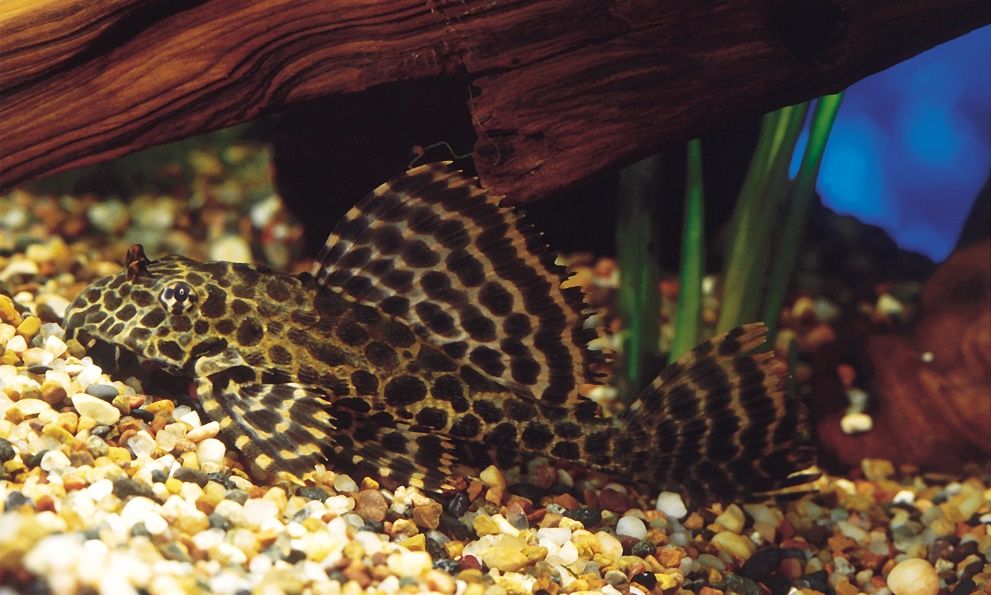
Credit: Florida Tropical Fish Farms Association
The common and gibbiceps plecos are moderate to large fish, ranging up to about 450 mm (18 in). The bushy-nose plecos are smaller, ranging up to about 130 mm (5 in).
Many species occur in flowing water habitats. Plecos typically breed in caves, under rocks, or in holes. The male guards the mass of adhesive eggs and may protect the offspring for a short time.
These catfish consume algae, insects, detritus, and curiously, wood.
Rainbowfishes (Families Melanotaeniidae, Pseudomugilidae and Others)
The rainbowfishes are the only species that are regularly cultured in Florida which originate predominately from Australia and New Guinea. The Celebes rainbowfish (Marosatherina ladigesi) and the Madagascar rainbowfish (Bedotia geayi) are two of the exceptions, named after their native locales.
Seven genera with 112 species make up the Melanotaeniidae, the most commonly bred family of rainbowfishes. A number of species of Glossolepis, such as the red rainbowfish (G. incisa) (Figure 13), and Melanotaenia (Figure 14), such as the common Australian rainbowfish (M. splendida), Boeseman's rainbowfish (M. boesemani) (Figure 15), and the neon dwarf rainbow (M. praecox), are cultured in Florida. Most species are small (< 125 mm or 5 in). The males are brightly colored while the females and juveniles are drab.
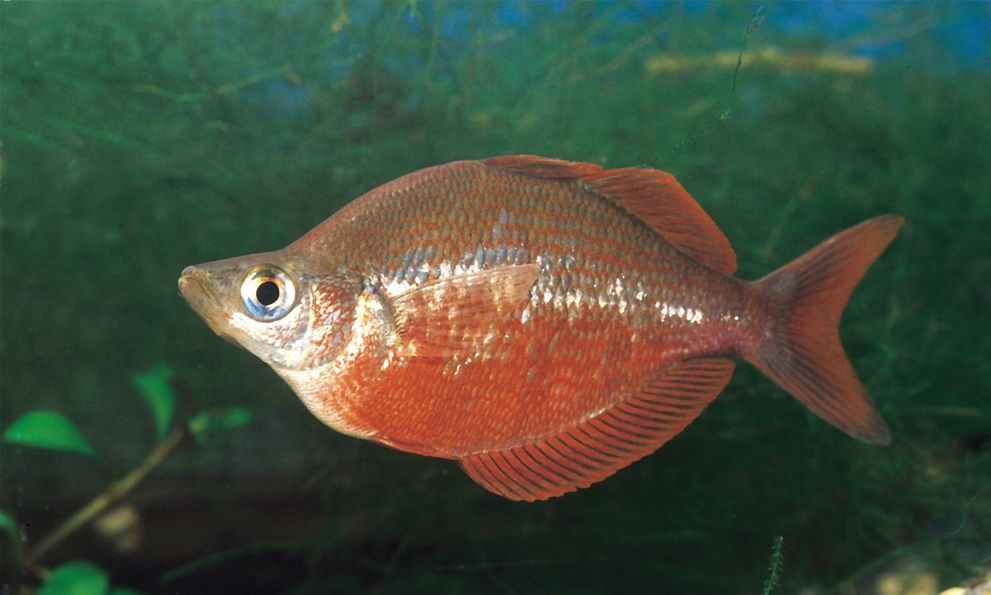
Credit: Florida Tropical Fish Farms Association
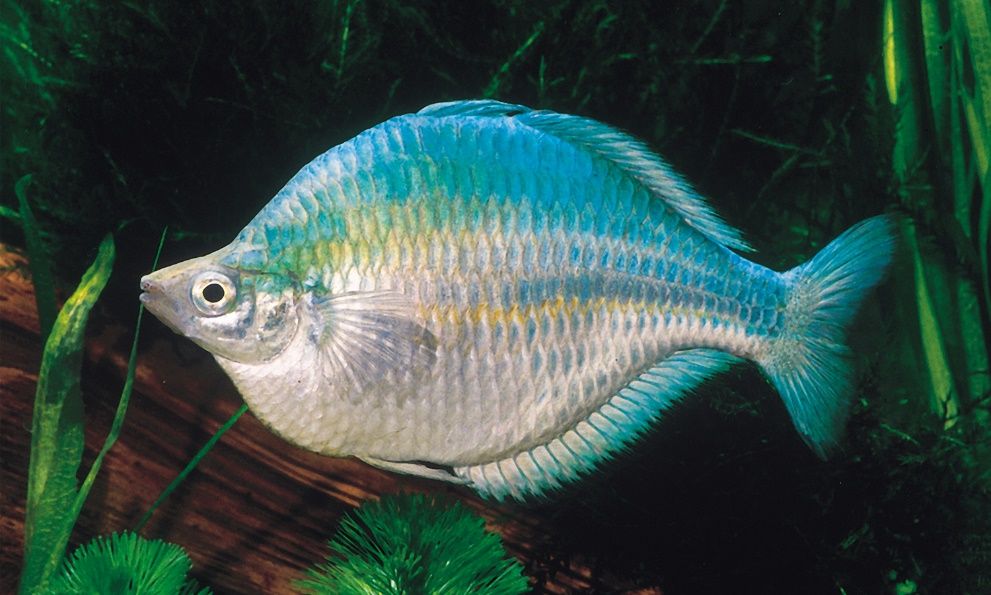
Credit: Florida Tropical Fish Farms Association

Credit: Eric Cassiano, UF/IFAS
Other families of rainbows bred in Florida include the Pseudomugilidae, known more commonly as the blue-eyes, and the Telmatherinidae, which includes the Celebes rainbowfish.
Males display to females and spawning occurs in groups over vegetation or other structures. The adhesive eggs stick to the vegetation and no parental care is provided.
Rainbowfishes consume insects and crustaceans.
Livebearers (Family Poeciliidae)
Livebearers as a group are "bread-and-butter" species and served as the foundation for the early tropical ornamental fish industry in Florida. About 272 species in 25 genera make up the Tribe Poeciliini, found in North and Central America, portions of northern South America, and on islands in the Caribbean. A tribe is a taxonomic grouping between family and genus.
The most common types of livebearers are cultured in numerous color and finnage varieties and belong to two genera, Poecilia, which includes the guppies (Figure 16) and mollies (Figure 17), and Xiphophorus, which includes the platies (Figure 18), variatus (Figure 19), and swordtails (Figure 20). Interspecific hybridization (reproduction between species) between the platies, variatus, and swordtails is believed to account for the many varieties currently in production. These are small species (< 140 mm or 5.5 in).
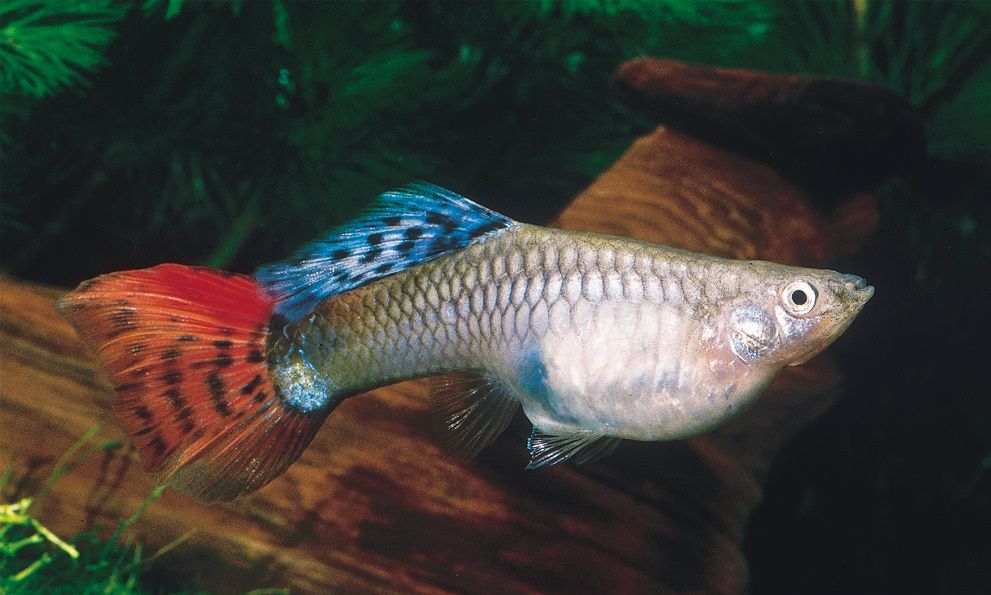
Credit: Florida Tropical Fish Farms Association
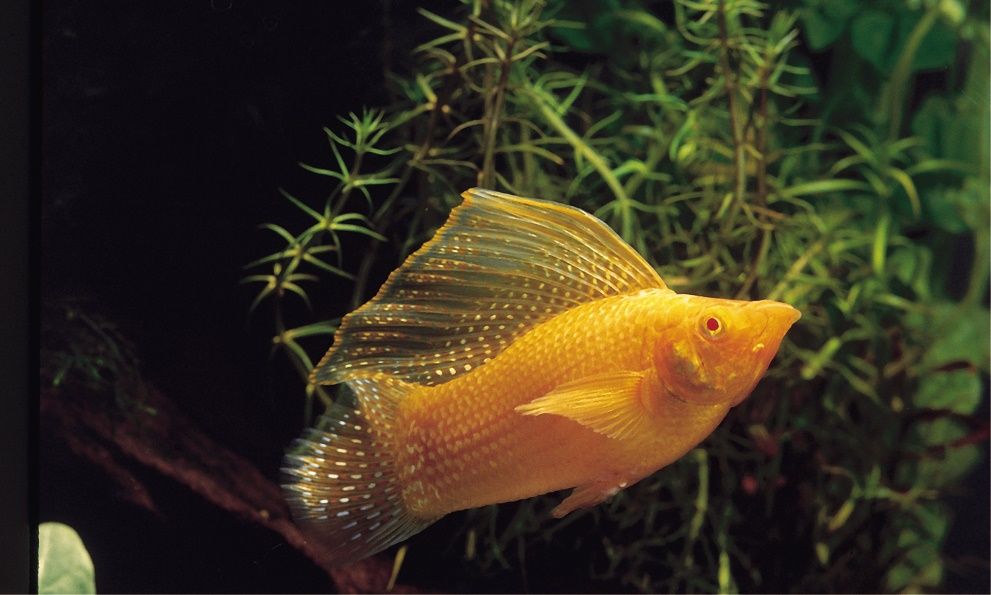
Credit: Florida Tropical Fish Farms Association
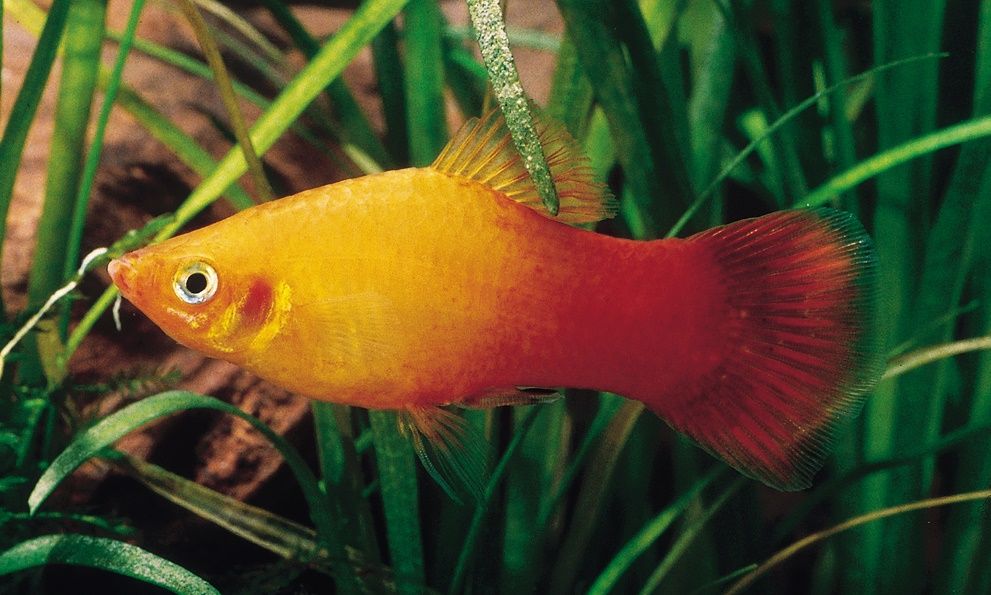
Credit: Florida Tropical Fish Farms Association

Credit: Florida Tropical Fish Farms Association
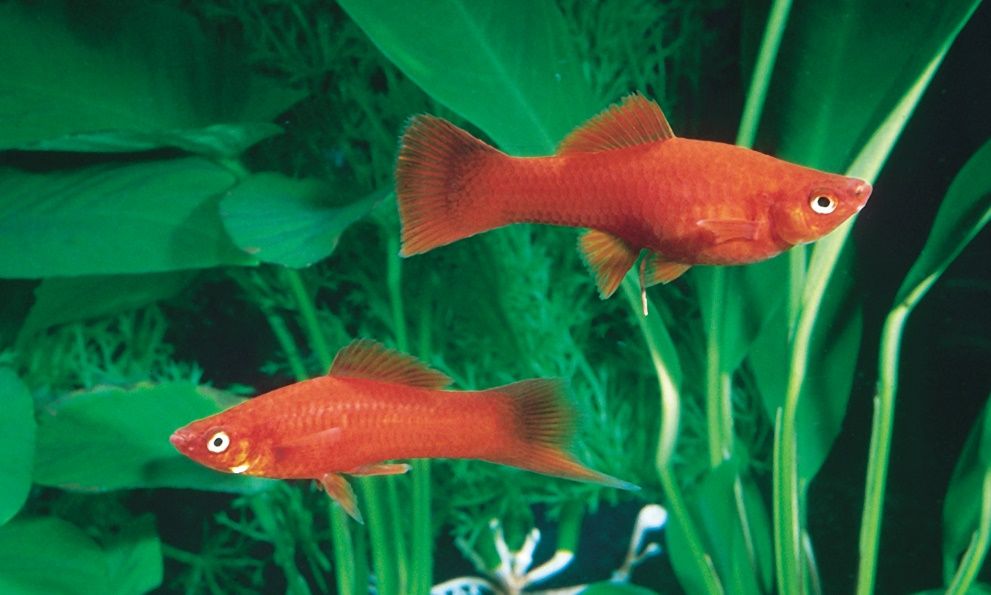
Credit: Florida Tropical Fish Farms Association
Males possess a gonopodium, a modified anal fin that is used to internally fertilize females. Mating is promiscuous and a female may carry the sperm of several males. The eggs are carried internally by the female and the young are born live (thus the name livebearer).
Poeciliids feed on algae, insects, and crustaceans.
Cichlids (Family Cichlidae)
Cichlids, among the most behaviorally advanced groups of aquarium fish, range from southern Asia and the Middle East throughout Africa and Madagascar in the Old World and Mexico, Central and South America, and the West Indies in the New World. A single species, the Texas cichlid (Herichthys cyanoguttatus), reaches southern Texas. The number of cichlid species is 1749 in about 256 genera. The greatest diversity occurs in East Africa's Lake Malawi, Lake Tanganyika, and Lake Victoria.
Commonly cultured species in Florida include angelfish (Pterophyllum scalare) (Figure 21), discus (Symphysodon discus) (Figure 22), eartheaters (Geophagus and Gymnogeophagus), oscar (Astronotus ocellatus) (Figure 23), and various "Cichlasoma" (Figure 24) from the New World. Cichlids from the Old World include haps ("Haplochromis") (Figure 25), jewel cichlids (Hemichromis) (Figure 26), kribs (Pelvicachromis) (Figure 27), mbuna (e.g., Maylandia, Melanochromis, and Pseudotropheus) (Figure 28), and Tanganyikans (e.g., Julidochromis, Neolamprologus, and Tropheus) (Figure 29) from Africa. When a generic name is in quotation marks (e.g., "Cichlasoma", “Haplochromis”), this means that scientists recognize that the name may not be valid for the group, but there is not a consensus on a replacement name.
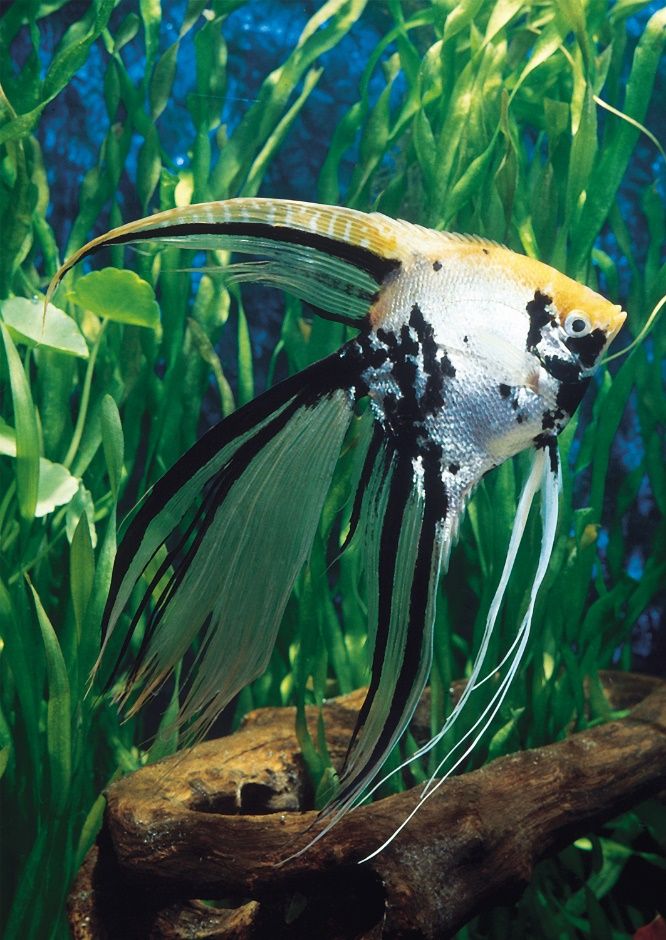
Credit: Florida Tropical Fish Farms Association
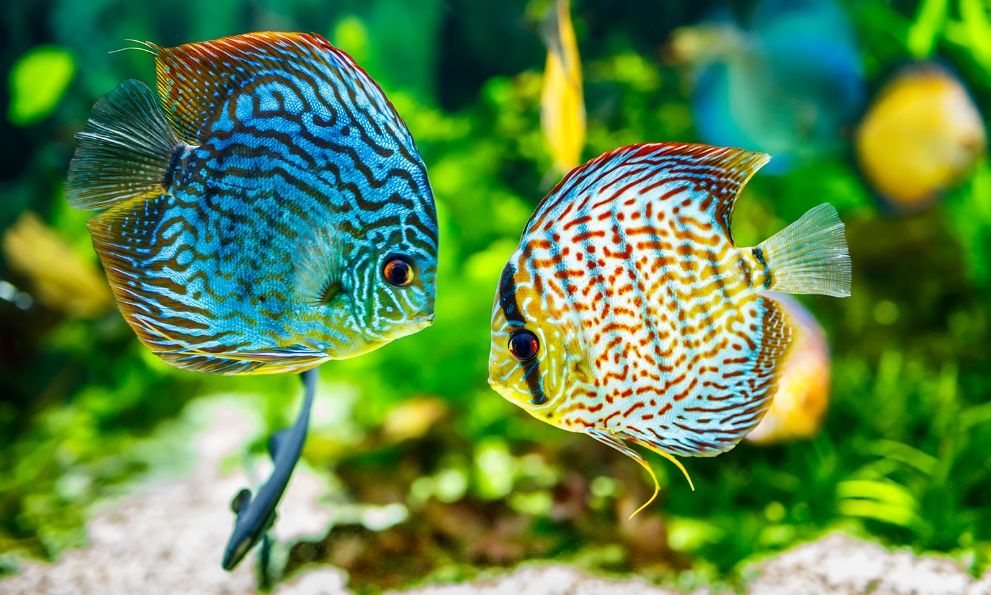
Credit: cookelma / iStock / Getty Images Plus
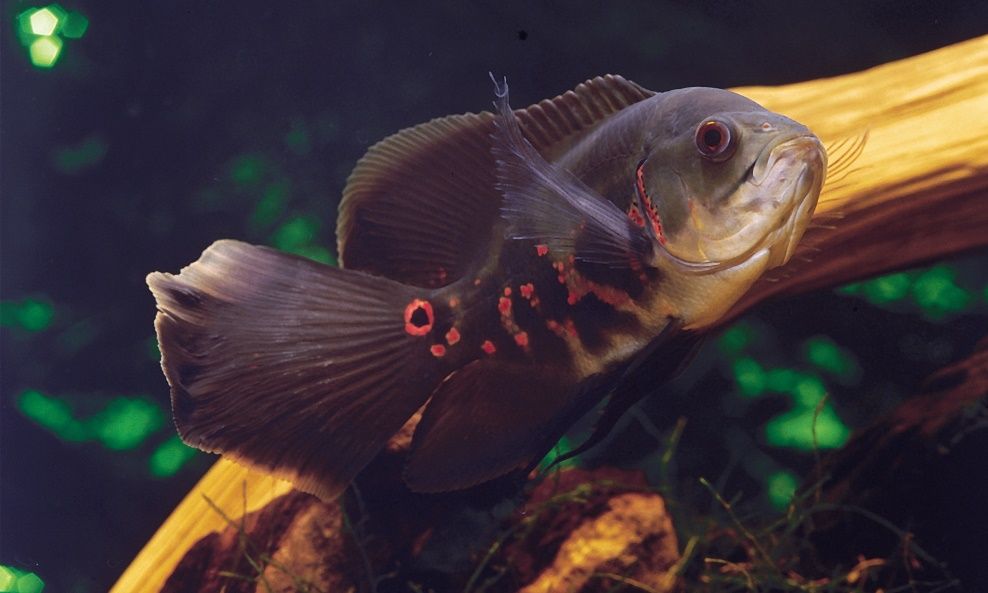
Credit: Florida Tropical Fish Farms Association
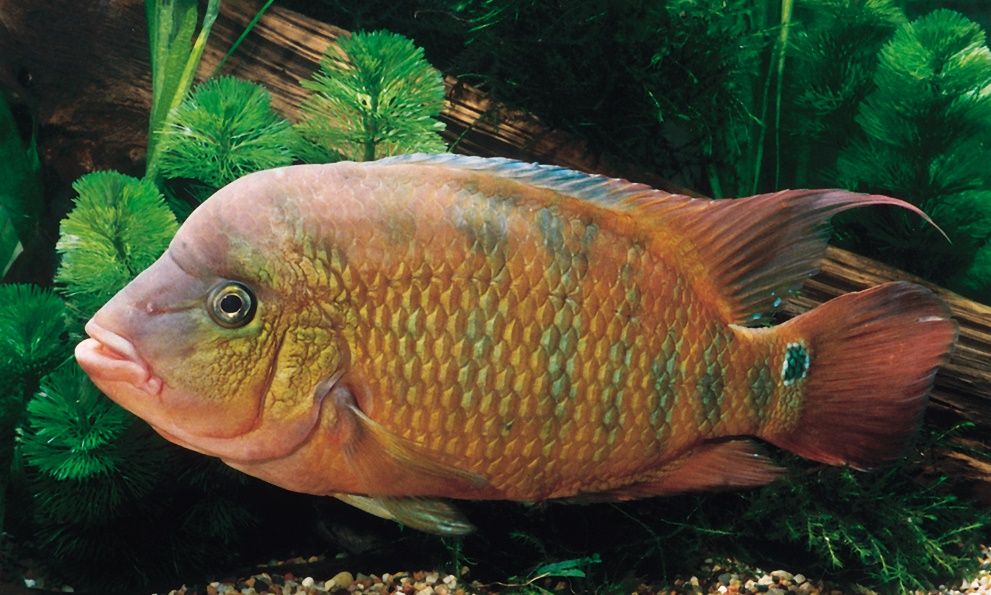
Credit: Florida Tropical Fish Farms Association
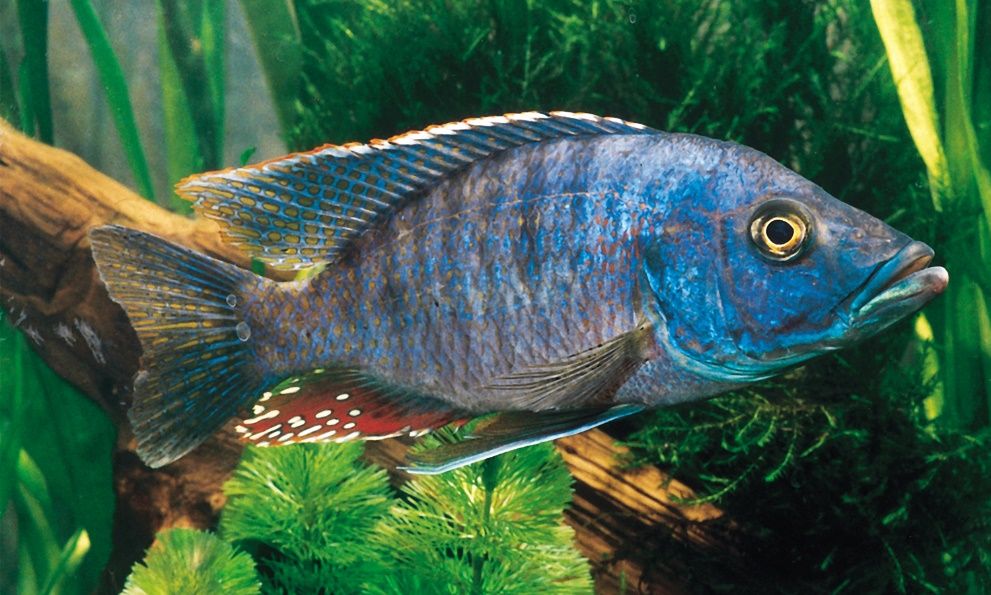
Credit: Florida Tropical Fish Farms Association
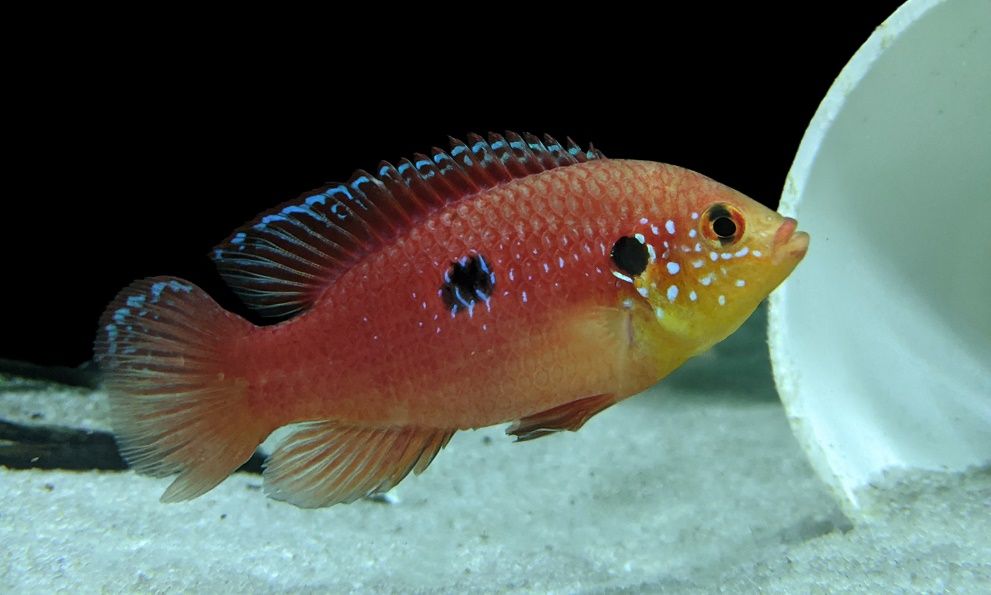
Credit: Imperial Tropicals (Lakeland, FL)
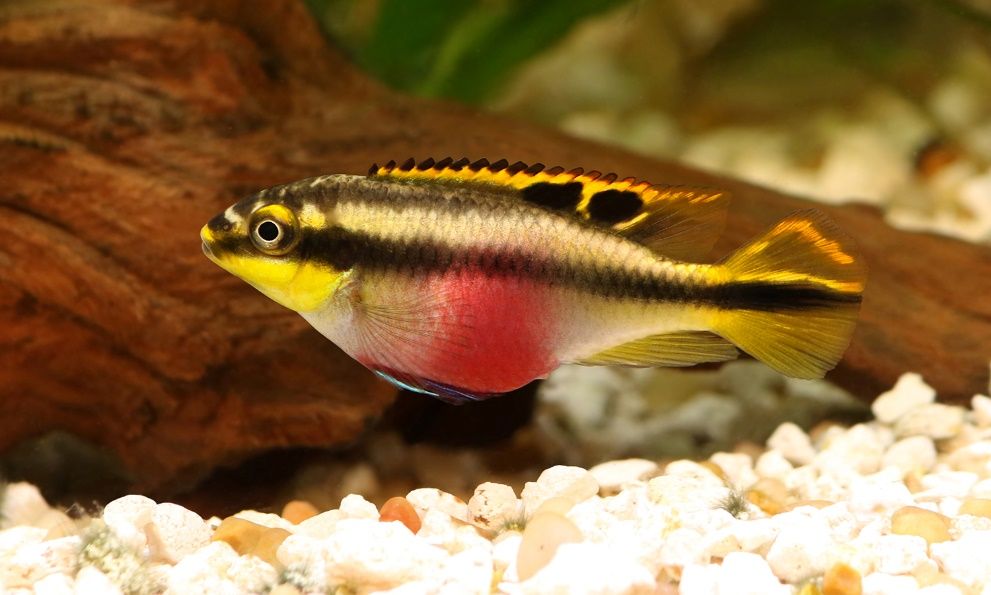
Credit: Mirko_Rosenau / iStock / Getty Images Plus

Credit: Imperial Tropicals (Lakeland, FL)

Credit: Florida Tropical Fish Farms Association
Cultured cichlids range in size from tiny Apistogramma and shell-dwelling Neolamprologus (about 40-50 mm or 1.5-2.0 in) to large “Cichlasoma” (> 500 mm or 20 in).
All cichlids provide some form of parental care, and many species are highly territorial, an important consideration when designing breeding and holding facilities. Many are biparental substrate spawners (both parents care for eggs laid in a nest) while others are maternal mouthbrooders (female parent carries the eggs in her mouth).
Foods of cichlids are as diverse as the members of the family, with many being dietary specialists. Some are herbivorous (plant eaters), scraping algae off rocks. Others pick invertebrates from crevices. Still others are fast predators of other fish. Many species are also generalist feeders, taking a variety of plant and animal material.
Labyrinth Fish (Families Osphronemidae and Helostomatidae)
Labyrinth fish, also known as anabantoids, include gouramis and paradisefish. Gouramies are native to south and southeast Asia. About 134 species in 14 genera make up the family Osphronemidae. Labyrinth fish are named for the "labyrinth organ" (modified gill) which is used like a lung to breathe atmospheric air.
Commercially cultured species in Florida are the gouramis (Trichogaster) (Figures 30 and 31) and paradisefish (Macropodus and Pseudosphromenus) (Figure 32). A closely allied species, the kissing gourami (Helostoma temminckii) (Figure 33) is the sole member of the family Helostomatidae.
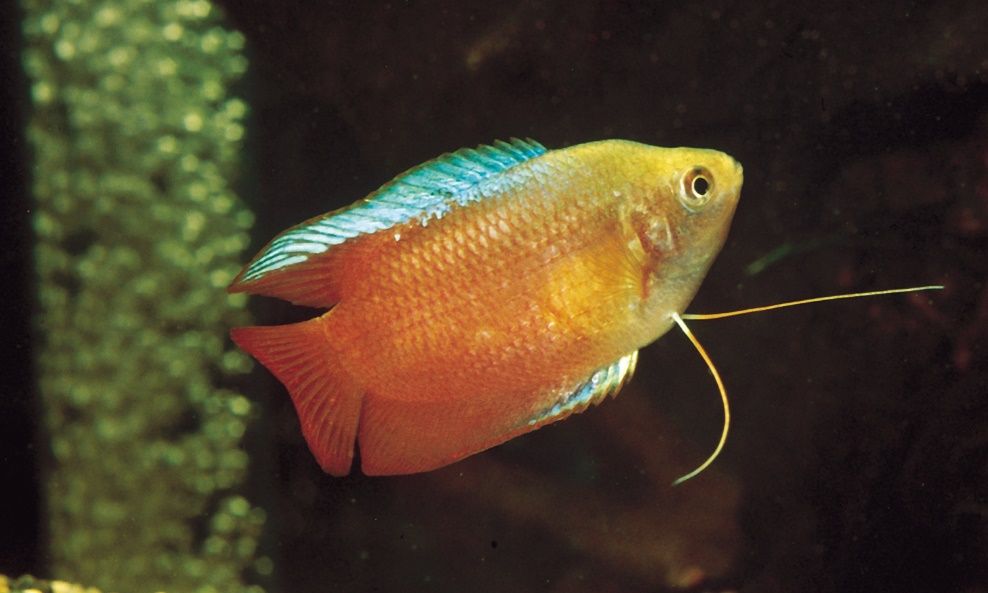
Credit: Florida Tropical Fish Farms Association
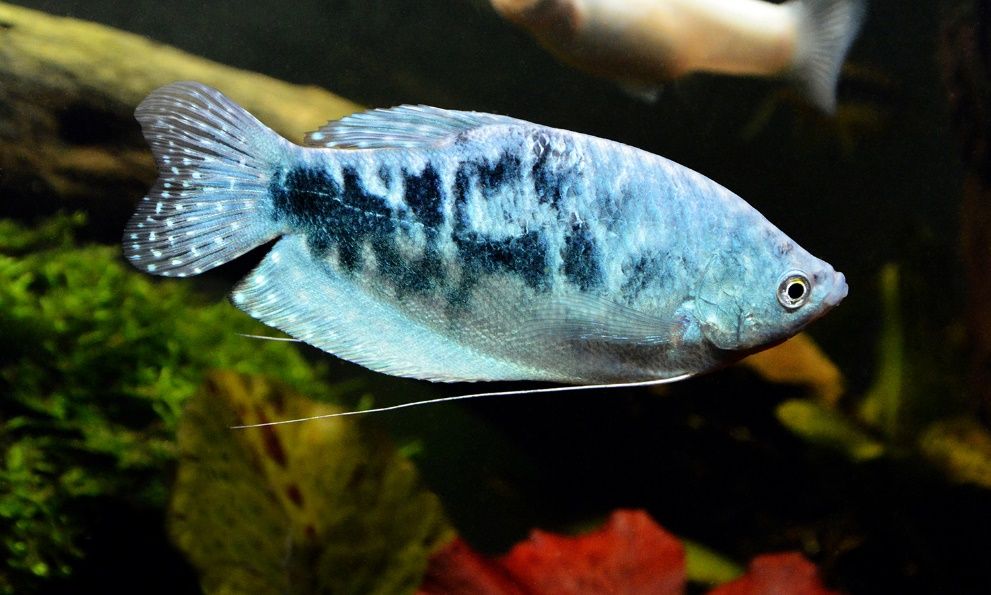
Credit: Jpr03 / iStock / Getty Images Plus
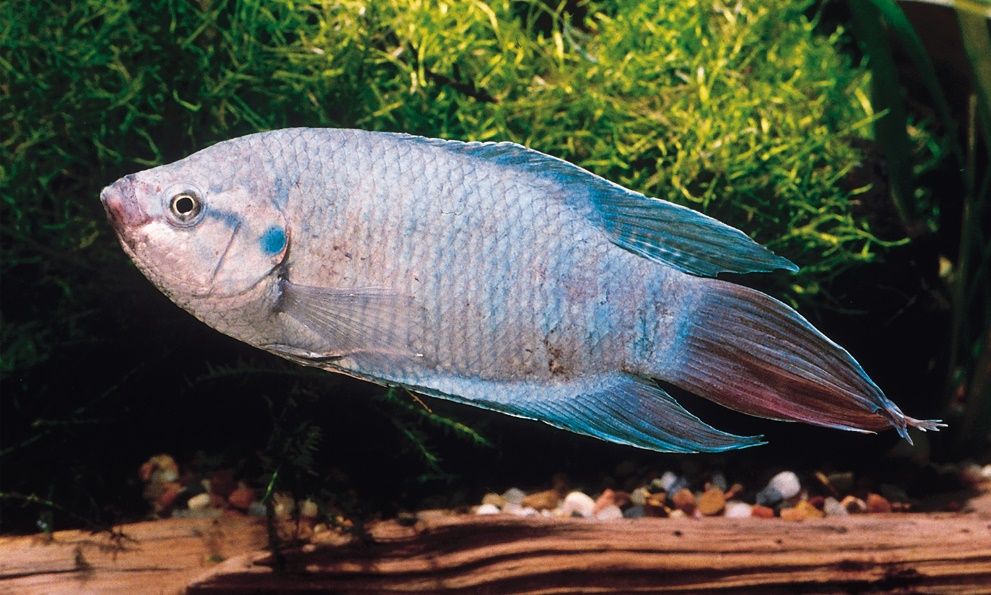
Credit: Florida Tropical Fish Farms Association
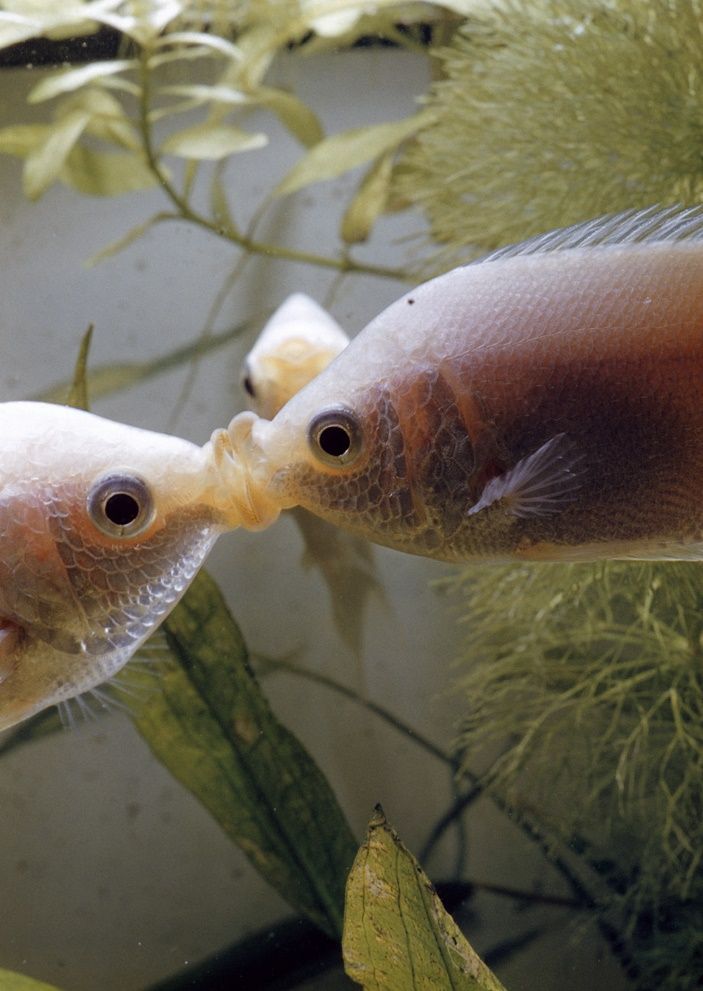
Credit: Jerry Yulsman / Photodisc / Getty Images
Most species are relatively small (< 150 mm or 6 in) with the exception of the kissing gourami (about 300 mm or 12 in).
Many labyrinth fish are bubble nest builders, with the male maintaining the nest as well as guarding and caring for the eggs and fry. However, a few species are mouthbrooders, and the kissing gourami female simply broadcasts masses of floating eggs for her partner to fertilize.
The natural diet of labyrinth fish usually consists of insects and crustaceans, although for some species, such as the kissing gourami, algae or other plant material are a significant part of their diet in the wild.
Discussion
The above list includes eight groups that comprise the most commonly cultured families of freshwater ornamental fishes in Florida. Other families are represented in the industry in far lesser numbers. A multitude of fish species from numerous families are also imported into the Florida trade, from wild-caught sources in South America, Africa, and southeast Asia and international production centers, mostly in southeast Asia.
However, the aquarium hobby thrives on novelty. The list of species and varieties cultured in Florida has steadily grown over the years and will continue to grow in the future. The development of new strains, including color, finnage (fin size, shape, etc.), and morphological variants of existing species, is one avenue. The other is the inclusion of new culture species. These new species will supplement the “bread-and-butter” staples and will ship from Florida into the national and international trade in freshwater tropical ornamental fish.